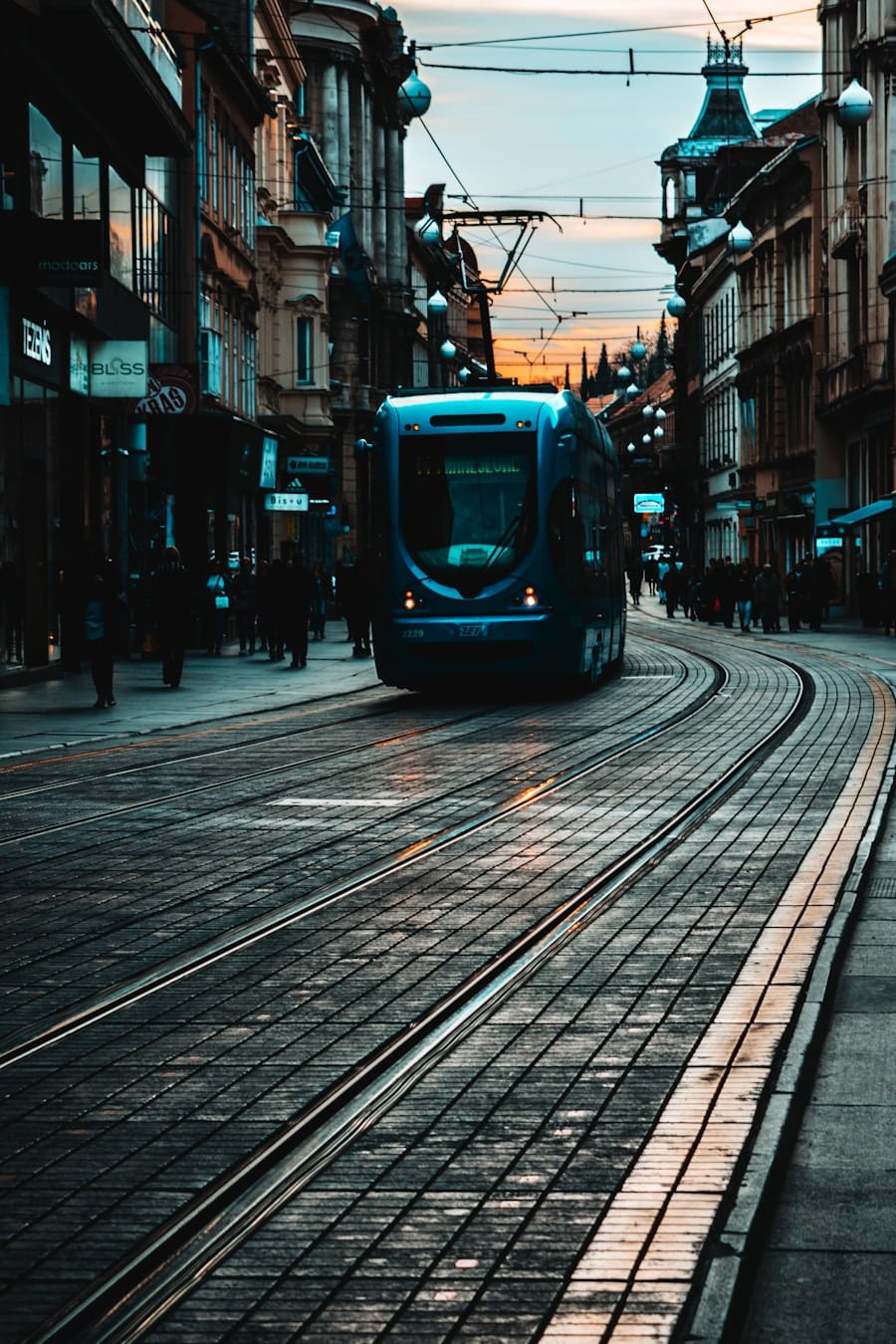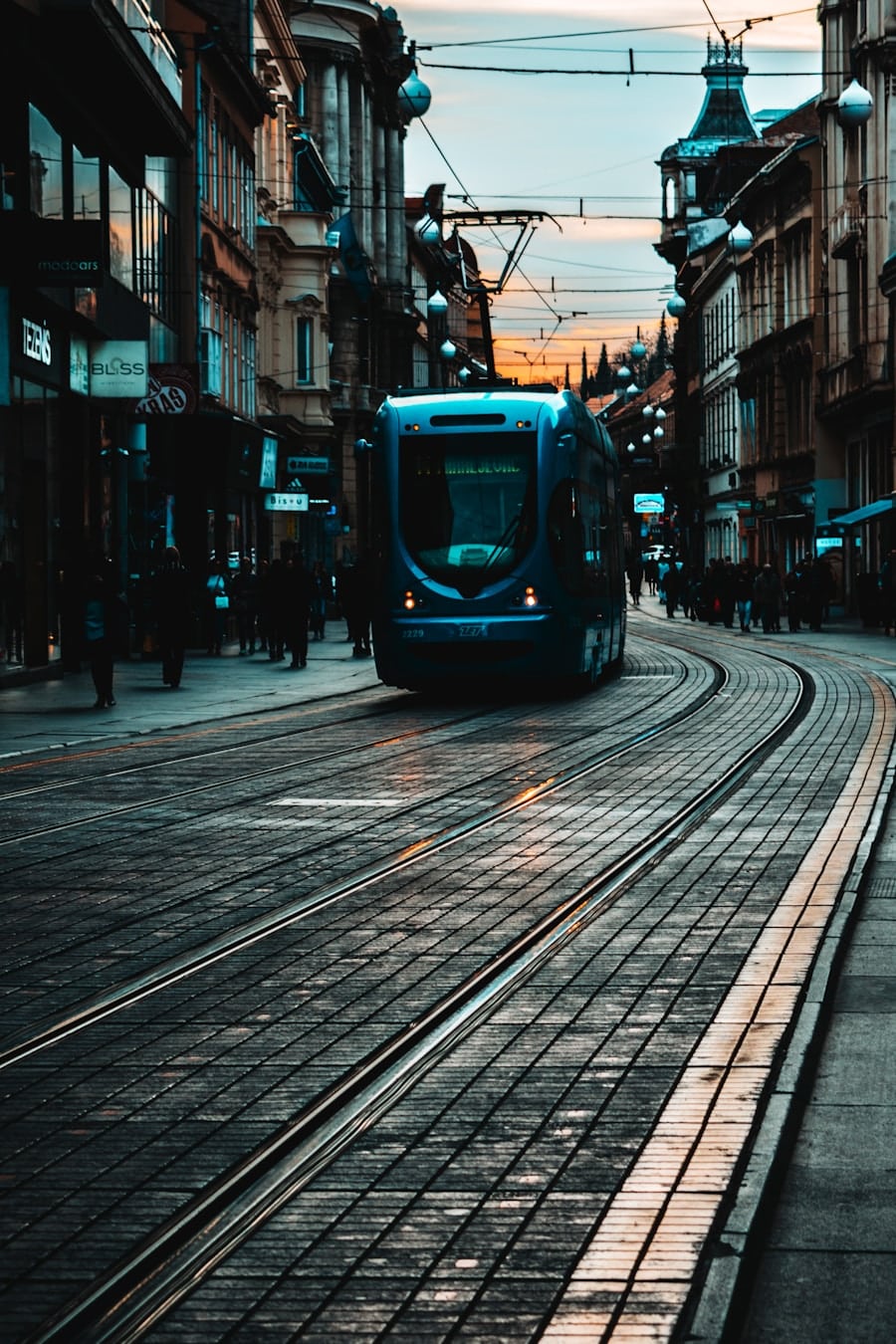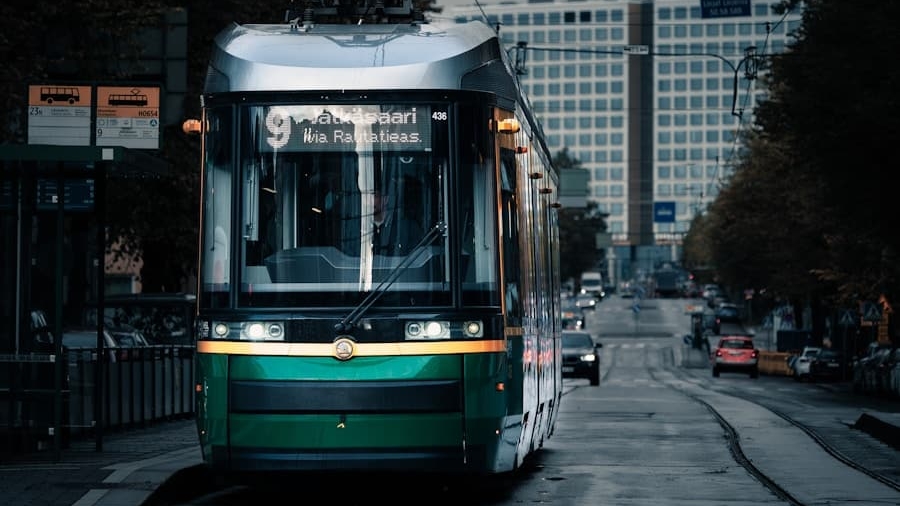Green public transportation networks are increasingly recognized as vital components of sustainable urban development. These networks encompass various modes of transport, including buses, trams, subways, and even bicycles, all designed to minimize environmental impact while maximizing accessibility and efficiency. The concept of “green” in this context refers not only to the reduction of greenhouse gas emissions but also to the promotion of social equity and economic viability.
As cities around the globe grapple with the challenges posed by climate change, urban congestion, and air pollution, the transition to greener public transportation systems has become a pressing priority. The integration of eco-friendly technologies and practices into public transportation is not merely a trend; it is a necessary evolution in how urban areas function. For instance, electric buses and hybrid vehicles are being deployed to replace traditional diesel-powered fleets, significantly reducing emissions.
Additionally, the development of dedicated bike lanes and pedestrian-friendly infrastructure encourages a shift away from car dependency. By fostering a culture of public transit use, cities can alleviate traffic congestion, improve air quality, and enhance the overall quality of life for their residents. The establishment of green public transportation networks is thus a multifaceted approach that addresses environmental concerns while promoting social and economic benefits.
Key Takeaways
- Green public transportation networks are essential for reducing carbon emissions and promoting sustainable urban development.
- Optimizing green public transportation networks can lead to improved efficiency, reduced traffic congestion, and lower environmental impact.
- AI technologies can play a crucial role in enhancing the efficiency and sustainability of public transportation systems.
- Case studies have shown that AI implementation in green public transportation networks can lead to significant improvements in route optimization and resource allocation.
- Despite the potential benefits, challenges and limitations such as data privacy and equity issues need to be addressed when implementing AI in green public transportation networks.
The Importance of Optimizing Green Public Transportation Networks
Optimizing green public transportation networks is crucial for several reasons. First and foremost, efficient public transit systems can significantly reduce the carbon footprint of urban areas. According to the International Energy Agency (IEA), public transport can reduce greenhouse gas emissions by up to 45% per passenger kilometer compared to private vehicles.
This reduction is particularly important as cities strive to meet international climate targets and commitments outlined in agreements such as the Paris Accord. By optimizing routes, schedules, and vehicle types, cities can enhance the effectiveness of their public transportation systems, making them more appealing to users and encouraging a shift away from personal vehicles. Moreover, optimizing these networks can lead to improved economic outcomes.
Efficient public transportation systems can stimulate local economies by providing residents with better access to jobs, education, and services. A well-functioning transit network can increase property values in surrounding areas and attract businesses that rely on a steady flow of customers. For example, cities like Portland, Oregon, have seen significant economic growth linked to investments in public transit infrastructure.
By prioritizing optimization efforts, municipalities can create a virtuous cycle where enhanced public transportation leads to greater economic activity, which in turn supports further investments in green initiatives.
How AI Can Improve Efficiency and Sustainability in Public Transportation

Artificial Intelligence (AI) has emerged as a transformative force in various sectors, and public transportation is no exception. By leveraging AI technologies, transit authorities can analyze vast amounts of data to optimize operations, improve service delivery, and enhance sustainability. One of the primary applications of AI in public transportation is predictive analytics, which allows agencies to forecast demand patterns based on historical data and real-time inputs.
In addition to predictive analytics, AI can facilitate the integration of various modes of transportation within a single network. For instance, AI-driven platforms can provide users with real-time information about available transit options, including buses, trains, ride-sharing services, and bike rentals.
This seamless integration encourages multimodal travel, reducing reliance on single-occupancy vehicles and promoting greener alternatives. Furthermore, AI can optimize vehicle maintenance schedules by predicting when maintenance is needed based on usage patterns and performance data. This proactive approach not only extends the lifespan of vehicles but also minimizes downtime and enhances overall service reliability.
Case Studies of AI Implementation in Green Public Transportation Networks
Several cities around the world have successfully implemented AI technologies to enhance their green public transportation networks. One notable example is Los Angeles, California, where the Los Angeles County Metropolitan Transportation Authority (Metro) has integrated AI into its operations to improve bus service efficiency. By utilizing machine learning algorithms to analyze traffic patterns and passenger demand, Metro has been able to optimize bus routes and schedules dynamically.
This initiative has resulted in reduced wait times for passengers and increased ridership, contributing to a more sustainable urban transport system. Another compelling case study is found in Singapore’s Land Transport Authority (LTA), which has adopted AI-driven solutions for its public transportation system. The LTA employs AI algorithms to manage traffic flow across the city’s extensive network of buses and trains.
By analyzing real-time data from various sources, including traffic cameras and sensors, the LTA can adjust traffic signals and bus frequencies accordingly. This responsive approach not only enhances the efficiency of public transport but also reduces congestion on the roads, leading to lower emissions overall. The success of these initiatives demonstrates the potential for AI to revolutionize green public transportation networks by making them more responsive and user-friendly.
Challenges and Limitations of AI in Green Public Transportation
Despite the promising potential of AI in optimizing green public transportation networks, several challenges and limitations must be addressed. One significant hurdle is the availability and quality of data. Effective AI algorithms rely on large datasets that accurately reflect passenger behavior, traffic conditions, and operational performance.
In many cases, transit agencies may lack access to comprehensive data or may struggle with data silos that hinder effective analysis. Additionally, ensuring data privacy and security is paramount; as agencies collect more information about users’ travel patterns, they must navigate complex ethical considerations regarding data usage. Another challenge lies in the integration of AI technologies with existing infrastructure.
Many public transportation systems were designed before the advent of advanced digital technologies, leading to compatibility issues when attempting to implement AI solutions. Upgrading legacy systems can be costly and time-consuming, often requiring significant investment from local governments or transit authorities. Furthermore, there may be resistance from stakeholders who are hesitant to adopt new technologies or fear job displacement due to automation.
Addressing these concerns through transparent communication and stakeholder engagement is essential for successful implementation.
The Future of AI in Green Public Transportation Networks

Autonomous Vehicles in Public Transit
Companies like Waymo and Tesla are already testing self-driving technology that could eventually be integrated into bus or shuttle services. Autonomous vehicles have the potential to reduce operational costs while improving safety and efficiency by minimizing human error.
Advancements in Predictive Analytics
Moreover, advancements in machine learning algorithms will likely lead to even more sophisticated predictive analytics capabilities. As AI systems become better at understanding complex patterns in data, they will be able to provide more accurate forecasts for passenger demand and traffic conditions.
Ethical Considerations in AI Optimization of Public Transportation
As cities increasingly turn to AI for optimizing public transportation networks, ethical considerations must be at the forefront of these discussions. One primary concern is equity; it is essential that AI-driven solutions do not inadvertently exacerbate existing inequalities within urban transport systems. For instance, if algorithms prioritize routes based on historical ridership data without considering underserved communities, marginalized populations may continue to face barriers in accessing reliable transportation.
Additionally, transparency in AI decision-making processes is crucial for building trust among users and stakeholders. Transit agencies must ensure that their algorithms are explainable and that users understand how decisions are made regarding service changes or resource allocation. This transparency can help mitigate fears surrounding bias or discrimination within AI systems while fostering a collaborative environment where community input is valued.
The Potential Impact of AI on Green Public Transportation Networks
The integration of AI into green public transportation networks represents a significant opportunity for cities worldwide to enhance sustainability while improving service delivery. By optimizing operations through predictive analytics and real-time data integration, transit agencies can create more efficient systems that encourage greater use of public transport over private vehicles. However, realizing this potential requires addressing challenges related to data quality, infrastructure compatibility, and ethical considerations.
As cities continue to innovate in their approaches to public transportation, the role of AI will undoubtedly expand. With careful planning and community engagement, the future holds promise for greener urban mobility solutions that benefit both people and the planet alike. The journey toward sustainable public transportation networks is complex but essential for creating livable cities that prioritize environmental stewardship alongside social equity.
In a recent article on Conversational Commerce, the potential for AI to revolutionize customer interactions and streamline the shopping experience is explored. This technology could also be applied to optimizing green public transportation networks, as AI algorithms can analyze data to improve route efficiency, reduce emissions, and enhance overall sustainability. By leveraging AI in both conversational commerce and public transportation, businesses and cities can work towards a more environmentally friendly and efficient future.
FAQs
What is the role of AI in optimizing green public transportation networks?
AI plays a crucial role in optimizing green public transportation networks by analyzing large amounts of data to improve route planning, reduce energy consumption, and minimize environmental impact.
How does AI help in improving route planning for green public transportation?
AI algorithms can analyze historical and real-time data to identify traffic patterns, passenger demand, and other factors that affect route efficiency. This helps in optimizing routes to reduce travel time and energy consumption.
What are the environmental benefits of using AI in public transportation networks?
By optimizing routes and schedules, AI can help reduce fuel consumption and emissions, leading to a decrease in environmental impact. This contributes to a more sustainable and eco-friendly public transportation system.
How does AI contribute to the adoption of green technologies in public transportation?
AI can analyze data to identify opportunities for integrating green technologies such as electric buses, hybrid vehicles, and renewable energy sources into public transportation networks. This helps in promoting the adoption of sustainable transportation solutions.
What are some examples of AI applications in optimizing green public transportation networks?
AI applications include predictive maintenance for vehicles, dynamic scheduling and routing, demand forecasting, and real-time monitoring of traffic and environmental conditions. These applications help in improving the efficiency and sustainability of public transportation systems.

